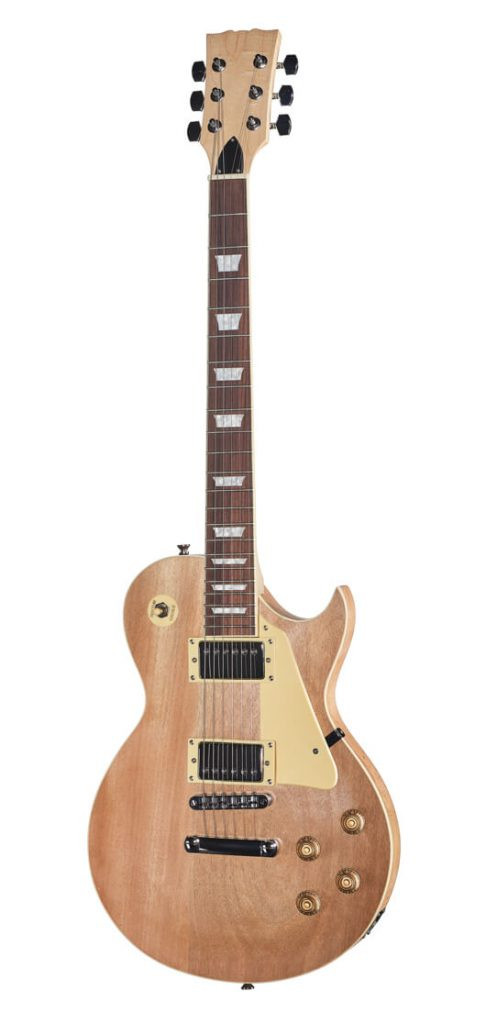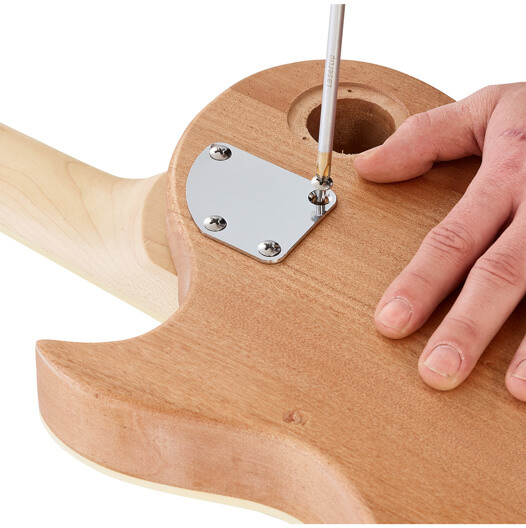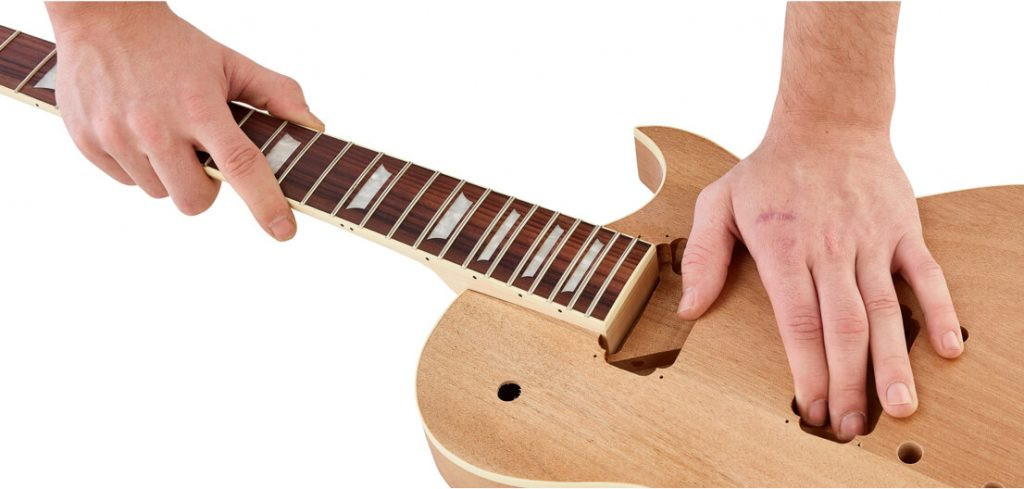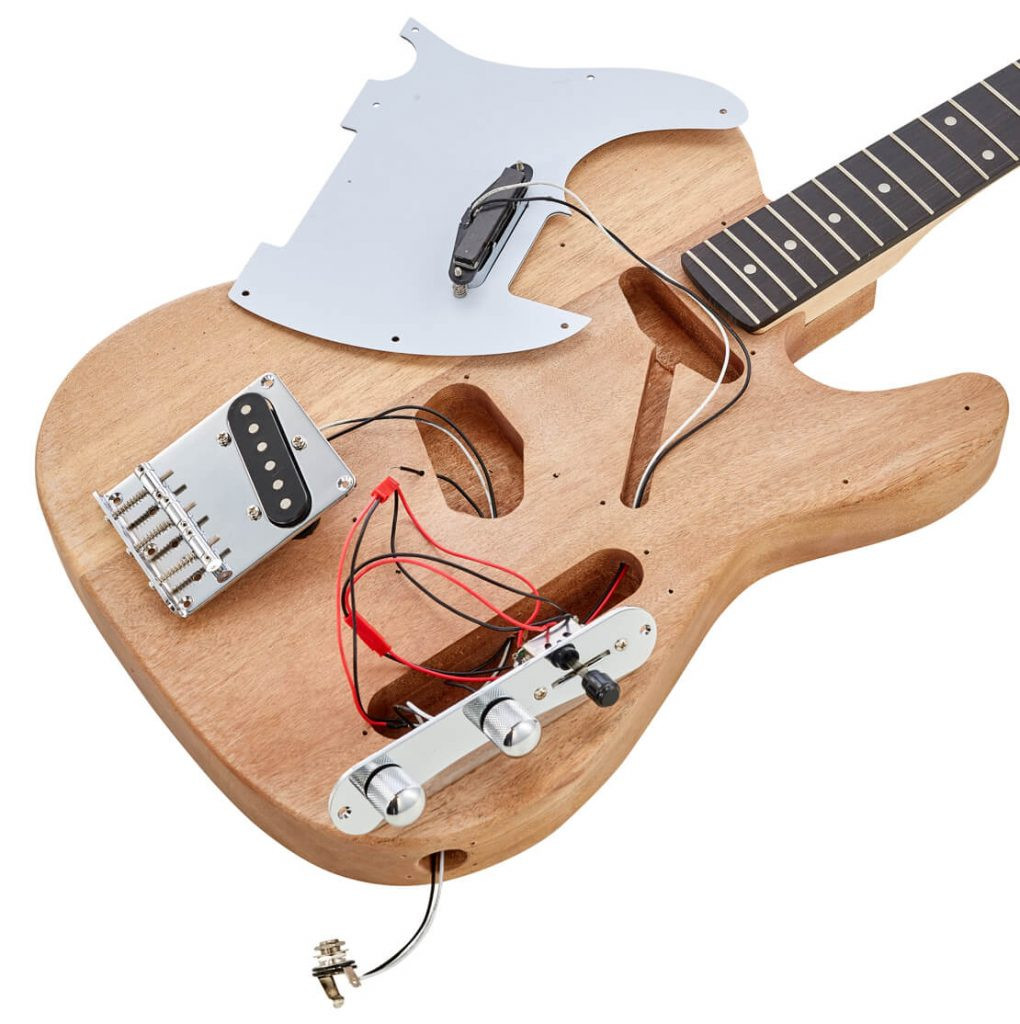Playing a guitar is a deeply personal experience, and there’s an unparalleled connection when you play an instrument you’ve built with your own hands. Imagine the thrill of strumming the first chord on a guitar that you not only play but also created. With Diy Guitar Kits, this dream becomes a tangible reality for anyone passionate about music and craftsmanship. These kits provide all the essential components, allowing you to assemble your very own electric guitar, bass, or ukulele, and embark on a rewarding journey of musical creation.
 Harley Benton DIY Guitar Kits Header
Harley Benton DIY Guitar Kits Header
Why Choose a DIY Guitar Kit?
Diving into the world of DIY guitar kits offers a multitude of benefits that go beyond simply acquiring a new instrument. It’s an experience that blends learning, creativity, and personal expression.
Firstly, personalization stands out as a key advantage. While factory-made guitars offer standard specifications, a DIY kit allows you to have a direct hand in the final product. You’re involved in the assembly process, gaining a deeper understanding of how each part contributes to the overall sound and playability of the instrument. This hands-on approach fosters a unique bond between you and your guitar.
Beyond personalization, DIY guitar kits are an exceptional educational tool. Building your own guitar demystifies the instrument, turning abstract concepts into practical knowledge. You’ll learn about wood types, hardware components, electronics, and how they all interact to produce music. This is invaluable for aspiring luthiers or anyone wanting a deeper appreciation for the mechanics of their instrument.
For budget-conscious musicians, DIY guitar kits can also present a cost-effective route to owning a quality instrument. By undertaking the assembly yourself, you bypass labor costs associated with factory-built guitars. This can make higher-quality components more accessible within your budget, allowing you to potentially create an instrument that rivals or even surpasses off-the-shelf models in a similar price range.
Finally, and perhaps most importantly, the sense of accomplishment derived from building your own guitar is immense. From unboxing the components to playing your first song, the journey is filled with challenges and triumphs. The satisfaction of holding a finished instrument, knowing you brought it to life, is a reward that mass-produced guitars simply cannot offer. It’s a testament to your patience, skill, and passion for music.
 DIY Guitar Kit Components
DIY Guitar Kit Components
What’s Included in a DIY Guitar Kit?
Typically, a DIY guitar kit is designed to provide nearly everything you need to assemble a playable instrument. Let’s break down the common components:
The body is the core of the guitar, and in a kit, it usually comes pre-shaped and often pre-drilled for hardware and electronics. The type of wood used for the body greatly influences the guitar’s tone, with common choices including basswood, mahogany, alder, and ash, each offering unique sonic characteristics. Many kits offer options in body style, such as the classic ST-Style, the versatile TE-Style, or the heavier sounding LP-Style, allowing you to choose a design that matches your musical preferences.
The neck, like the body, is a crucial tonal element and also dictates the playability of the guitar. Kits usually include a pre-fretted neck, often made of maple, with a fingerboard of rosewood, maple, or other tonewoods. The neck profile (shape of the back of the neck) and fret type also contribute to the playing experience and are factors to consider when selecting a kit.
Hardware encompasses all the metal parts of the guitar. This includes the bridge, which anchors the strings to the body and affects sustain and intonation; tuners, for adjusting string tension and pitch; pickups, which convert string vibrations into electrical signals; and electronics such as potentiometers (pots) for volume and tone control, switches for pickup selection, and output jacks. Quality hardware is essential for both the sound and the longevity of your instrument.
Many kits also include essential electronics, wiring, and sometimes even strings to get you started. While some kits might assume you have basic tools, others may include some basic tools or recommendations for what you’ll need. It’s important to check the kit description to understand exactly what is provided and what you might need to acquire separately.
 Assembled DIY Guitar Kit Necks and Bodies
Assembled DIY Guitar Kit Necks and Bodies
Types of DIY Guitar Kits Available
The variety within DIY guitar kits is extensive, catering to diverse musical styles and instrument preferences. Whether you’re drawn to the bright, snappy tones of a ST-Style guitar, the warm, rich sounds of a hollowbody bass, or the cheerful strumming of a ukulele, there’s likely a kit to match your musical aspirations.
Electric guitar kits are the most popular, offering a wide array of body shapes and pickup configurations. You can find kits replicating iconic models like the ST-Style, known for its versatility; the TE-Style, prized for its twang and bite; the SC (Single Cut), favored for its warm, sustained tones; and many others. These kits allow you to build your own version of a classic instrument, often with opportunities for customization during the finishing and assembly process.
Bass guitar kits are also readily available, encompassing popular styles like the JB-Style (Jazz Bass), celebrated for its articulate and punchy sound; the PB-Style (Precision Bass), known for its foundational, driving tone; and hollowbody bass kits, offering a warmer, more resonant character. Building your own bass can be particularly rewarding, giving you control over the specifics of your low-end sound.
For those seeking a different stringed instrument experience, ukulele kits provide a fun and accessible entry point into instrument building. Ukuleles are known for their bright, cheerful tone and ease of playing, making them popular for beginners and experienced musicians alike. DIY ukulele kits are typically simpler to assemble than guitar or bass kits, making them a great project for a weekend or for those new to DIY instrument building. You can find kits for different ukulele sizes like soprano, concert, and tenor, each with its own unique voice and playing feel.
 Selection of DIY Guitar Kit Body Shapes
Selection of DIY Guitar Kit Body Shapes
Is a DIY Guitar Kit Right For You?
DIY guitar kits appeal to a broad spectrum of individuals, from seasoned musicians to those just starting their musical journey. If any of the following resonate with you, exploring a DIY kit might be an excellent choice:
Beginner to intermediate players can greatly benefit from the hands-on learning experience. Building a guitar provides an intimate understanding of the instrument, which can enhance your playing and maintenance skills. It’s a fantastic way to connect with your instrument on a deeper level right from the start.
Hobbyists and DIY enthusiasts often find guitar kits to be a compelling project. If you enjoy building things, working with your hands, and appreciate the blend of craftsmanship and music, a guitar kit offers a fulfilling and creative outlet. It’s a project that culminates in a functional and enjoyable product.
Players seeking a unique instrument will find immense satisfaction in a self-built guitar. Beyond the standard components, you have the freedom to customize the finish, hardware, and potentially even electronics to some extent, creating an instrument that truly reflects your personal style and sonic preferences. This level of customization is rarely achievable with off-the-shelf guitars.
Ultimately, if you’re looking for a rewarding project that combines music, craftsmanship, and personalization, DIY guitar kits offer an exciting and accessible pathway to creating your own instrument.
 DIY Guitar Kit Headstocks and Hardware
DIY Guitar Kit Headstocks and Hardware
Building Your DIY Guitar: A Rewarding Journey
Embarking on the journey of building your own guitar is an incredibly rewarding experience. While the process can vary slightly depending on the kit and instrument type, the general steps typically involve:
Assembly: This is the core of the process, where you’ll be fitting the neck to the body, installing hardware like the bridge and tuners, and wiring the electronics. Most kits come with instructions, and online resources are plentiful for guidance. Patience and attention to detail are key during this stage.
Finishing: Many kits come with unfinished wood, allowing you to apply your own custom finish. This could involve sanding, staining, painting, and applying clear coats to protect the wood and enhance its appearance. The finish is a significant aspect of the guitar’s aesthetics and can be a very personalized part of the build.
Setup: Once assembled and finished, the final step is setting up the guitar for optimal playability. This includes adjusting the neck relief, setting the string height (action), and intonating the guitar so it plays in tune across the fretboard. A good setup is crucial for a comfortable and enjoyable playing experience.
The entire process, from opening the box to playing your first song on your self-built guitar, is a journey of learning and creation. The feeling of playing an instrument that you’ve personally brought to life is a unique and powerful connection that amplifies the joy of making music.
DIY guitar kits are more than just a collection of parts; they are an invitation to become a part of the instrument-making process, to unleash your creativity, and to experience the unique magic of playing a guitar you built yourself. Explore the range of DIY guitar kits available and start your journey towards crafting your own musical masterpiece today!
